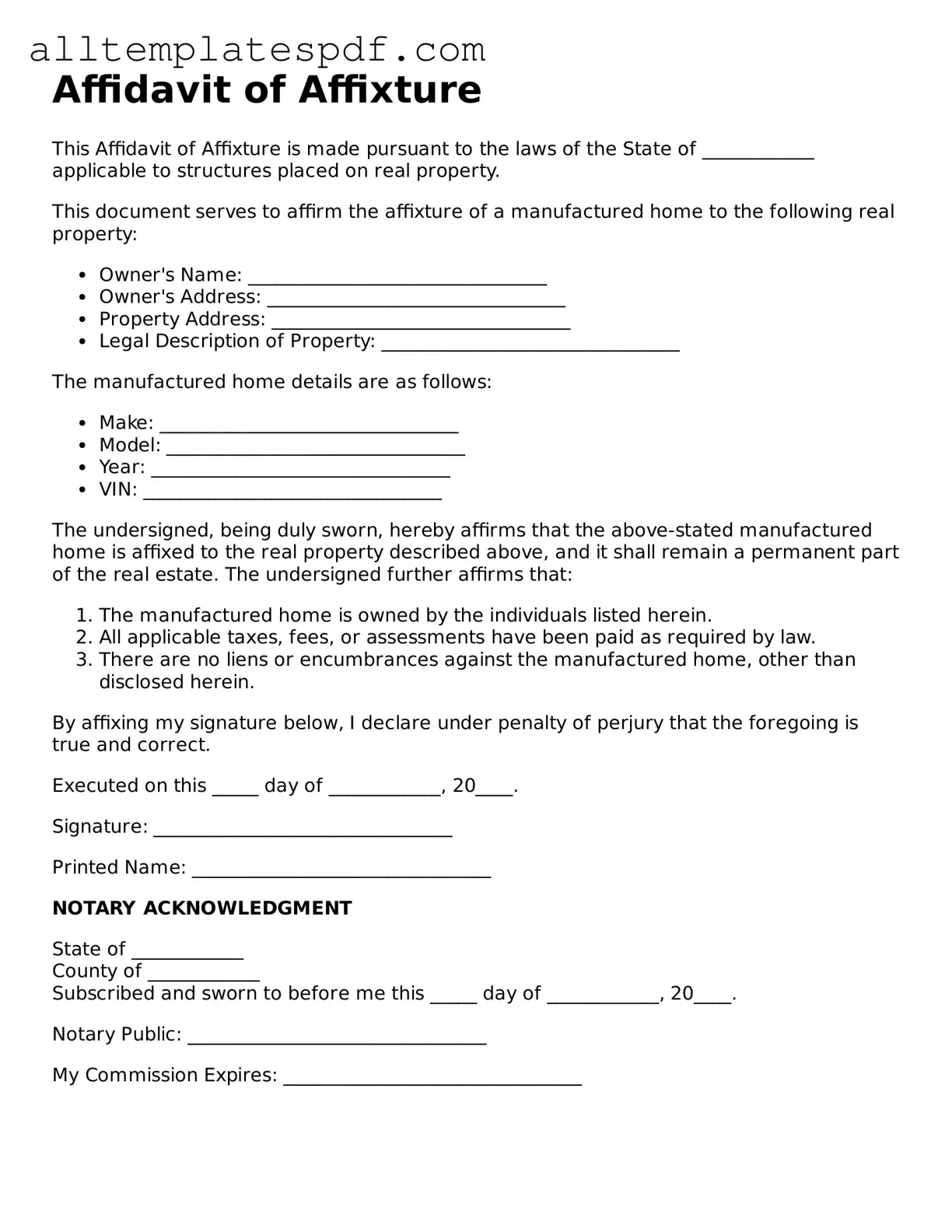Filling out the Affidavit of Affixture form can be a straightforward process, but several common mistakes can lead to complications. One frequent error occurs when individuals fail to provide accurate property information. This includes details such as the legal description of the property or the correct address. Inaccuracies can result in delays or even rejection of the affidavit.
Another mistake often made is neglecting to sign the document in the appropriate places. Signatures are crucial as they authenticate the information provided. If a signature is missing or improperly placed, the affidavit may not be considered valid, which can create additional hurdles in the process.
People sometimes overlook the importance of having the affidavit notarized. A notary public serves as an impartial witness to the signing of the document, and without this step, the affidavit may not hold legal weight. It is essential to ensure that the notarization is completed correctly to avoid any issues.
Additionally, individuals may fail to include all necessary supporting documents. The Affidavit of Affixture often requires specific documentation to accompany the form, such as proof of ownership or prior title documents. Omitting these can delay processing and may necessitate resubmission of the entire application.
Lastly, many people underestimate the importance of reviewing the completed form before submission. Errors in spelling, numbers, or other details can lead to misunderstandings or misinterpretations. Taking the time to double-check the information can save time and prevent potential complications down the road.
